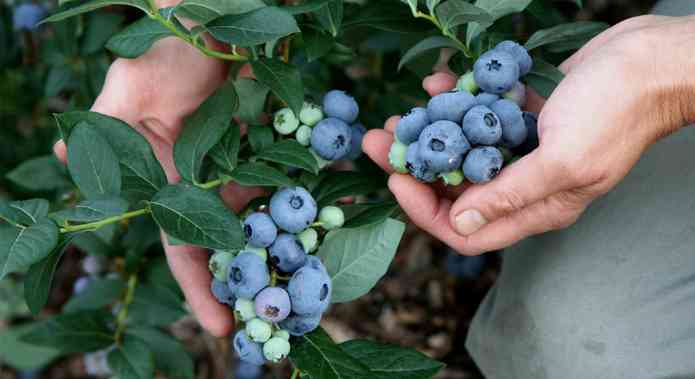
THE Horticultural Development Council (HDC) has submitted a proposal to the Zimbabwe Investment Development Agency (Zida) seeking an additional 4 000 hectares (ha) for blueberry production.
As the name says, blueberry is a small dark blue berry indigenous to North America, but now spread as a cultivated crop around the world. It is a perennial plant related to the cranberry and the huckleberry. World production is over 850 000 tonnes a year.
In its first quarter report, Zida said the proposed 4 000ha for blueberry production was estimated to cost US$140 million.
“The HDC is advancing the production of blueberries, citrus, coffee and flowers. To this end HDC submitted its plans to Zida, which gave details on the proposal to secure an additional 4 000 hectares for blueberry production estimated to cost US$140 million to develop,” the report read in part.
“For coffee production, HDC plans to establish and manage 1 000ha of coffee in the Eastern Highlands (Manicaland) and support 1 300 small- and medium-scale coffee producers to produce 2 220 tonnes per year with a gross value of over US$11 million annually and creating more than 2 000 jobs.
“Rose production is expected to increase with a further 800ha driven by increased demand from South African, Russia and the Far East markets estimated to be worth around US$277 million in export proceeds.”
According to the report, Zida is providing facilitation and assistance with land identification and acquisition, creation of special export horticulture economic zones, creation of specialised export horticultural parks for value addition and beneficiation so that the council is able to achieve its set target of a US$1 billion horticulture industry by 2030.
High-quality fresh vegetables and fruit often need to be airlifted to get to markets while still fresh, and so need to be of high-value to justify the costs.
- 'Horticulture Fund a catalyst for investment'
- Global leisure brand eyes airport deal
- HDC seeks 4 000ha for blueberry production
- Zida sees huge jump in new investments
Keep Reading
When Zimbabwe's horticulture exports were much higher and included a lot of products that lose freshness in a couple of days, there were both special chartered flights and cargo space on scheduled air services, which were typically available as more other goods were flown into Zimbabwe than out.
Last year, HDC revealed that it was working on the China Protocol for Citrus with the aim to follow closely for blueberries and avocados as well as other products.
“Market diversification will be key in order to maintain competitiveness in the sector,” HDC said.
According to HDC, the country’s horticultural exports increased from US$6 million in 1988 to US$103 million in 1997. It says exports grew by an average rate of 25% from 1998 to 2004, before peaking above US$250 million.
The sector, which employs 18 700 people and has potential to double the jobs in the next four years to 2025, is projected — under the horticulture recovery and growth plan — to contribute export earnings of US$300 million per year by 2030.
HDC is a non-profit, membership-driven organisation in the export horticultural industry.







